Why You Need to Visit the Simple Yet Stunning Abbey of Sant’Antimo Italy
The Abbey of Sant’Antimo is one of my favorite religious destinations in Italy.
It is so simple yet so stunningly beautiful — because of its simplicity.
The church we see today was originally built in the 12th century.
Yup.
It’s old!!
And it’s considered to be a masterpiece of Medieval architecture.
There is a lot of history to Sant’Antimo too.
So let’s start with the where then we can go into all the history and the reasons YOU need to put this abbey on your list.
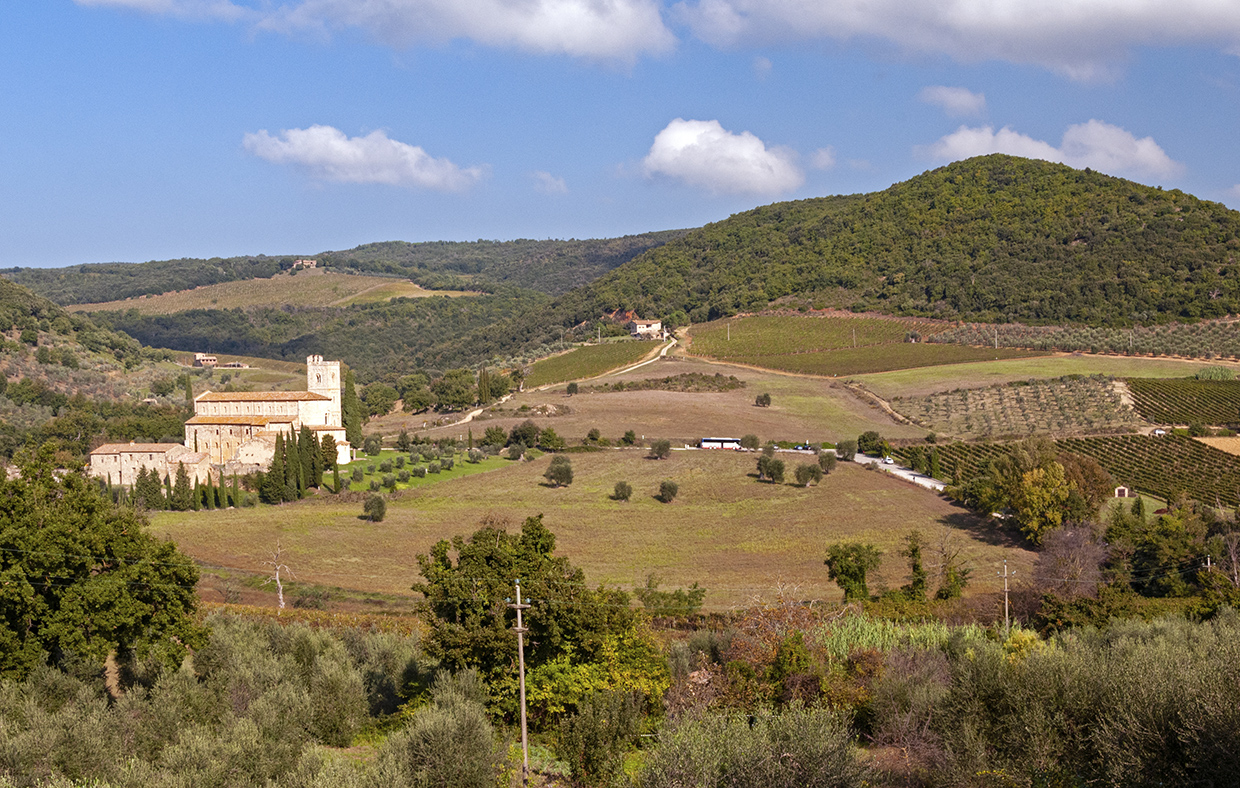
Where is Abbey of Sant’Antimo?
This abbey has a prime location in the Tuscany region of Italy, specifically the town of Castelnuovo dell’Abate.
Abbey of Sant’Antimo is just 10km from one of my favorite Tuscan towns, Montalcino which is the home to the fabulous Brunello wines.
As you might imagine, the abbey has a gorgeous location amongst the rolling hills, vineyards and olive groves of the area.
So if you are going to be in Tuscany, especially in the Val d’Orcia area then Sant’Antimo is an absolute must!
Why should I visit this abbey?
Early History
Legend has it that the original Abbey of Sant’Antimo was founded at the time of the Holy Roman Empire under the Emperor Charlemagne.
So this dates the founding to the 800’s.
Back then it was a chapel and called Carolingian Chapel.
In 814, Charlemagne’s successor, Louis the Pious, issues a creed that gives the religious house ‘goods’ — meaning buildings, land, relics, artwork and anything else of value — and privileges.
This was common to give abbeys and monasteries a high status because religion was such a central role in life back then.
During the municipal or communal period of the 1200’s — when the towns were gaining more importance — the abbey lost some of its ‘goods’ including the castle of Montalcino.
The religious institutions were simply not as important as they once were.
By the end of the 13th century, the Abbey of Sant’Antimo was in serious decline.
So Pope Nicholas IV decided to hand the abbey over to the Guglielmiti — a reformed Benedictine order.
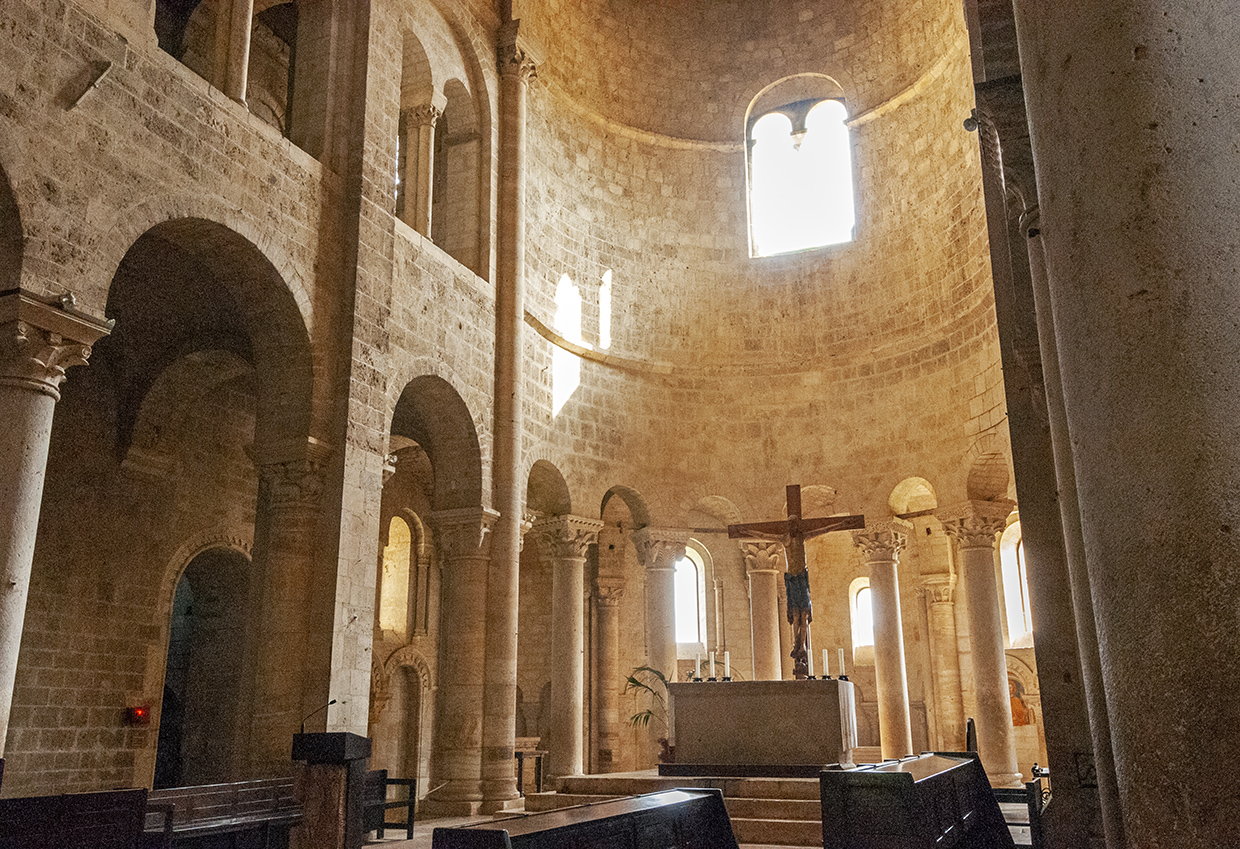
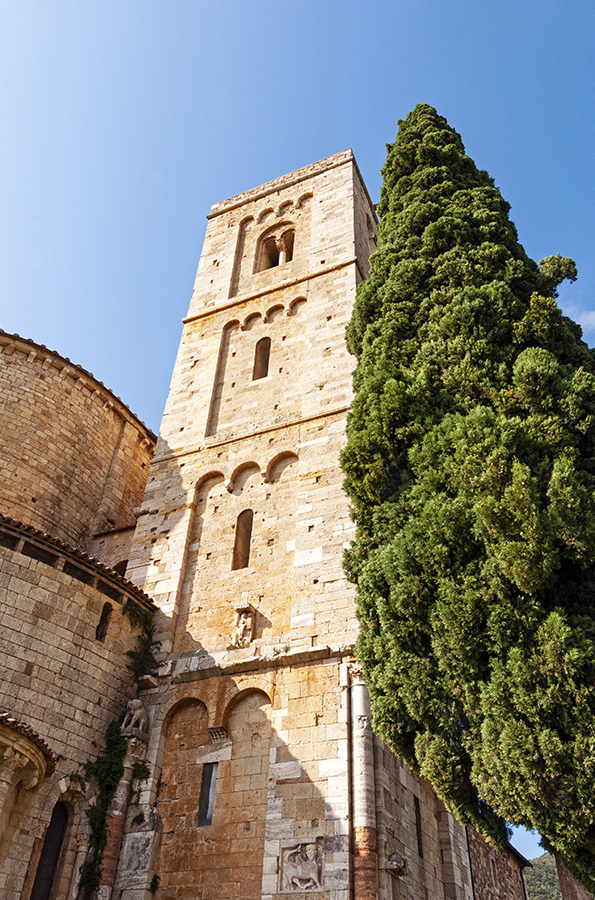
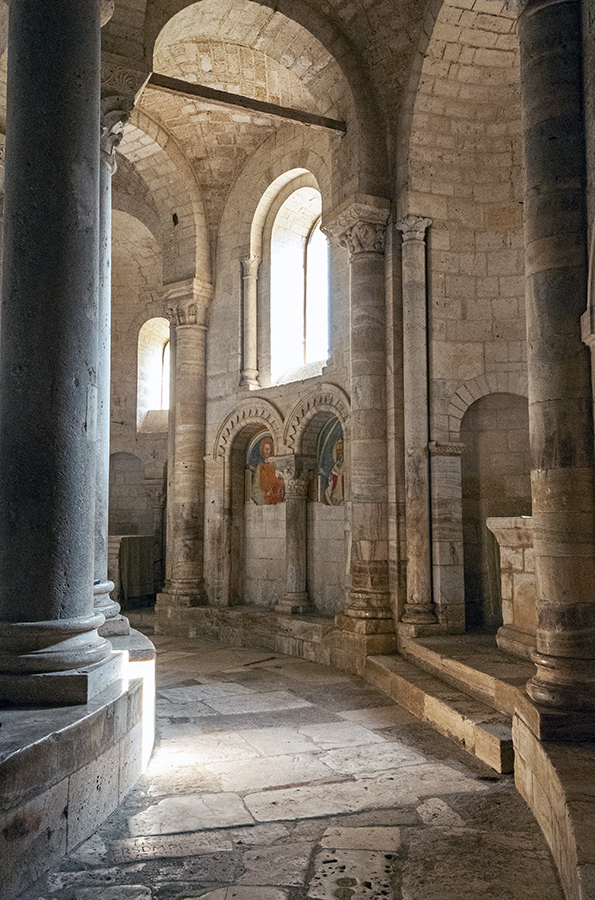
History of Abbey of Sant’Antimo part 2
Despite being helped by the Papacy, Sant’Antimo started to lose its splendor in 1462 when Pope Pius II incorporated the abbey into the new Diocese of Montalcino and Pienza.
I get the feeling he was not a fan of this order of monks.
As the 15th century rolled along, the beautiful abbey began to collapse as the stones from it were used to build the nearby village of Castelnuovo dell’Abate.
I always hate to hear these stories.
Anyway…
Finally around 1870 the abbey began its long road to restoration led by the architect, Guiseppe Partini.
And now we have this simple, yet beautiful abbey back to its former glory.
As for the inhabitants…
There are 3 diocesan priests and some lay people with established ministries who live at Abbey of Sant’ Antimo.
So the abbey is no longer a house for the Guglielmiti order.
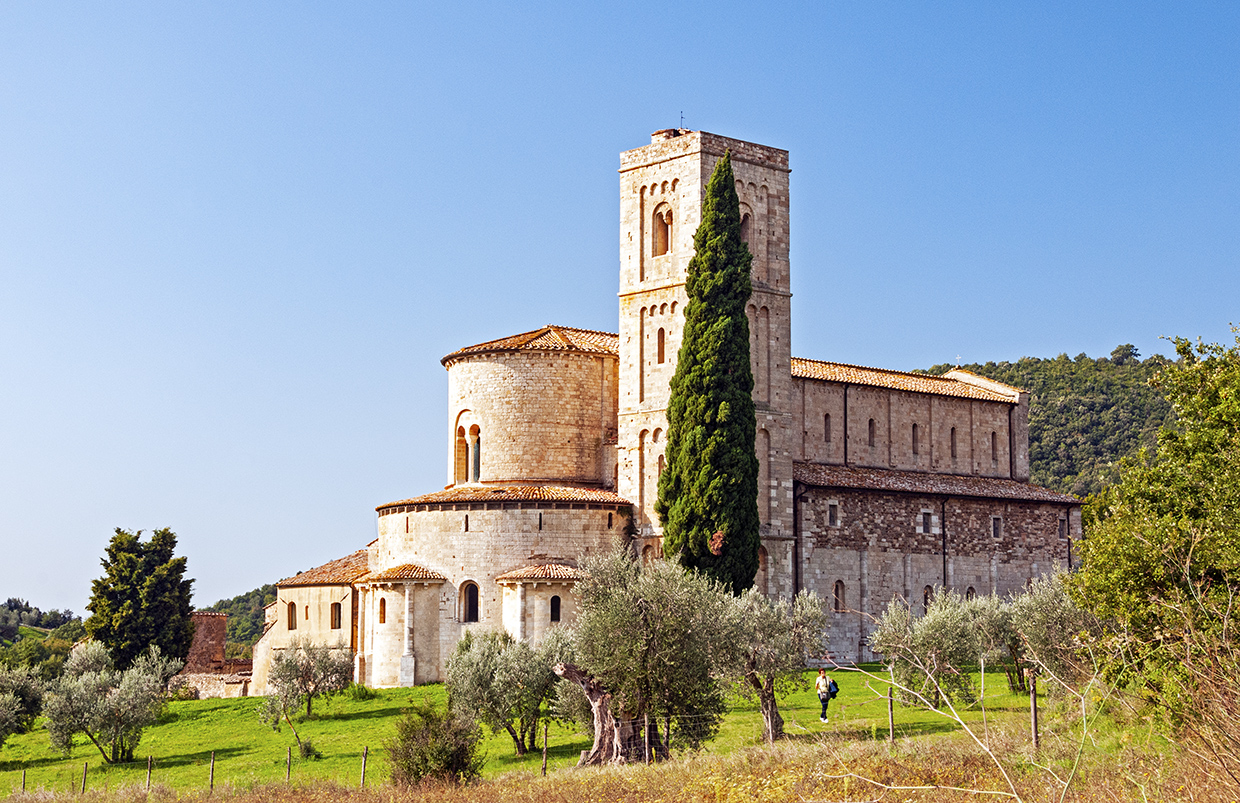
The church itself
Abbazia di Sant’Antimo — the Italian version — is open daily from roughly 10am to 5 or 6pm depending on the time of year.
Always check the website for hours.
But it is open to visitors year round.
And it’s such a simple yet stunning work of art.
The light colored stones.
The lack of decoration and ornate accents.
And even the lack of paintings and other artwork.
There’s no gold.
No abundance of statues or paintings.
Yet it is one of the most beautiful churches I’ve ever set eyes on.
Wood and stone.
That’s what you get in Abbey of Sant’Antimo.
And it’s gorgeous!
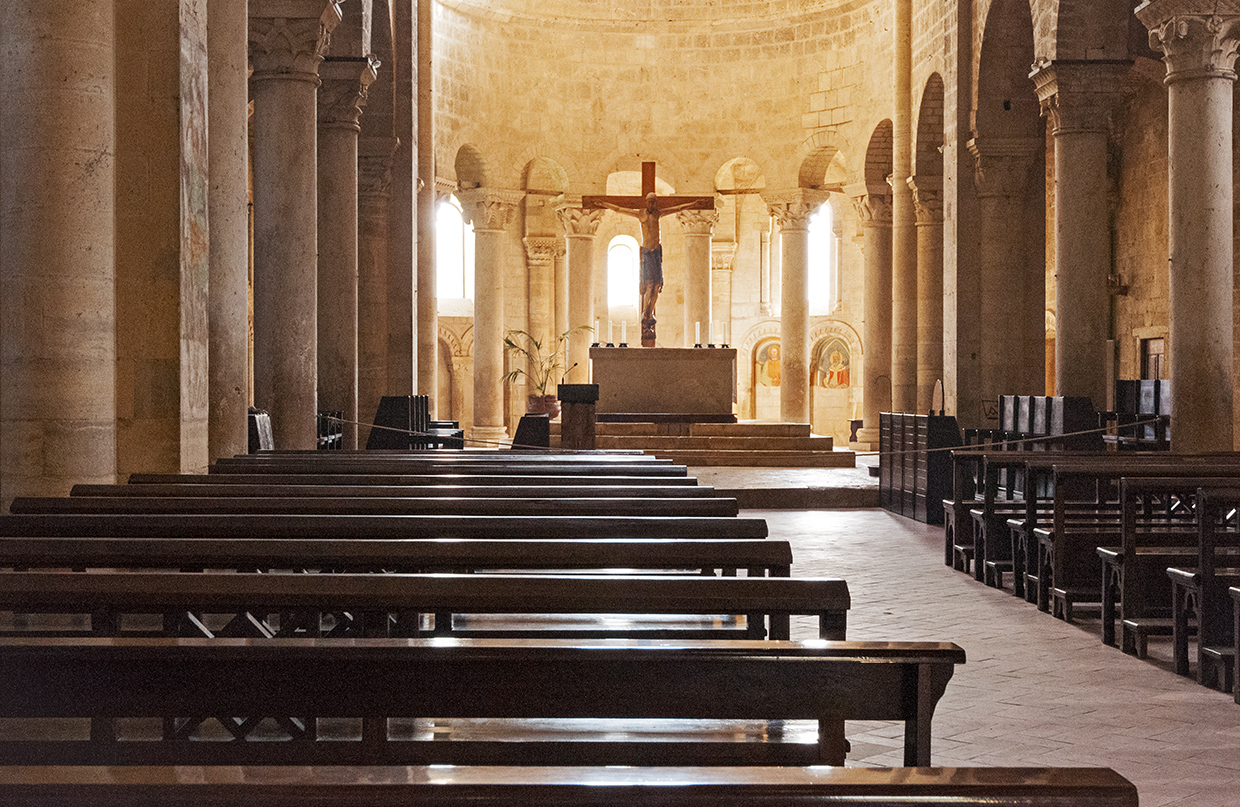
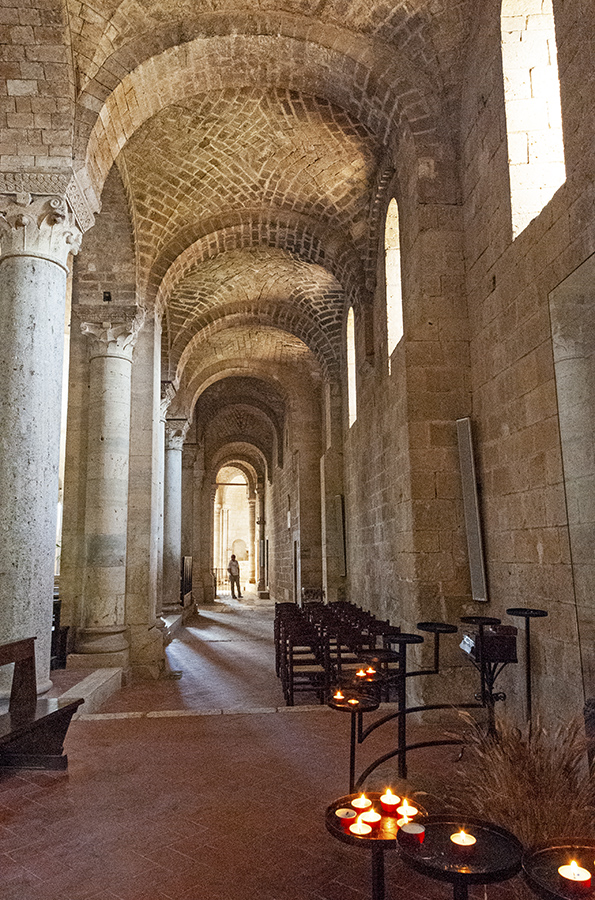
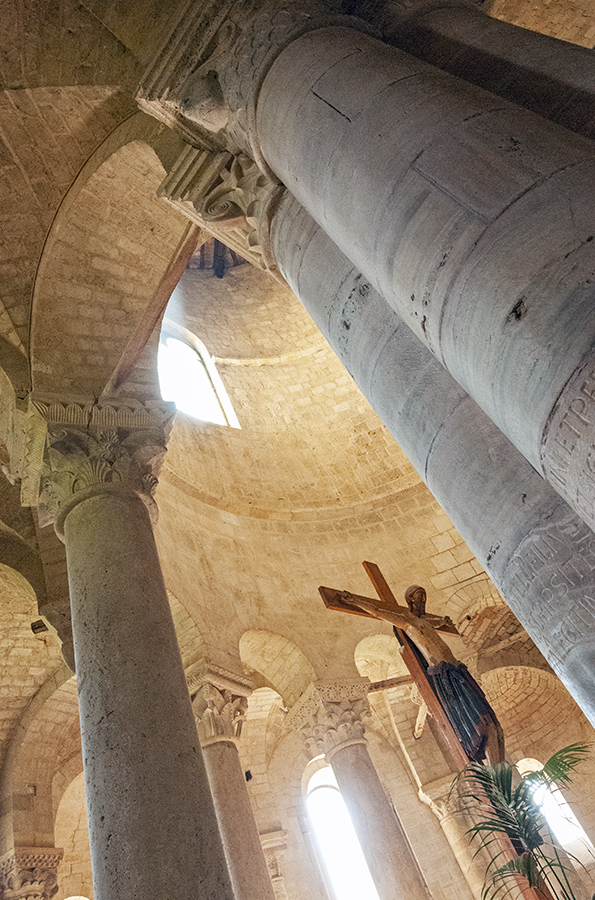
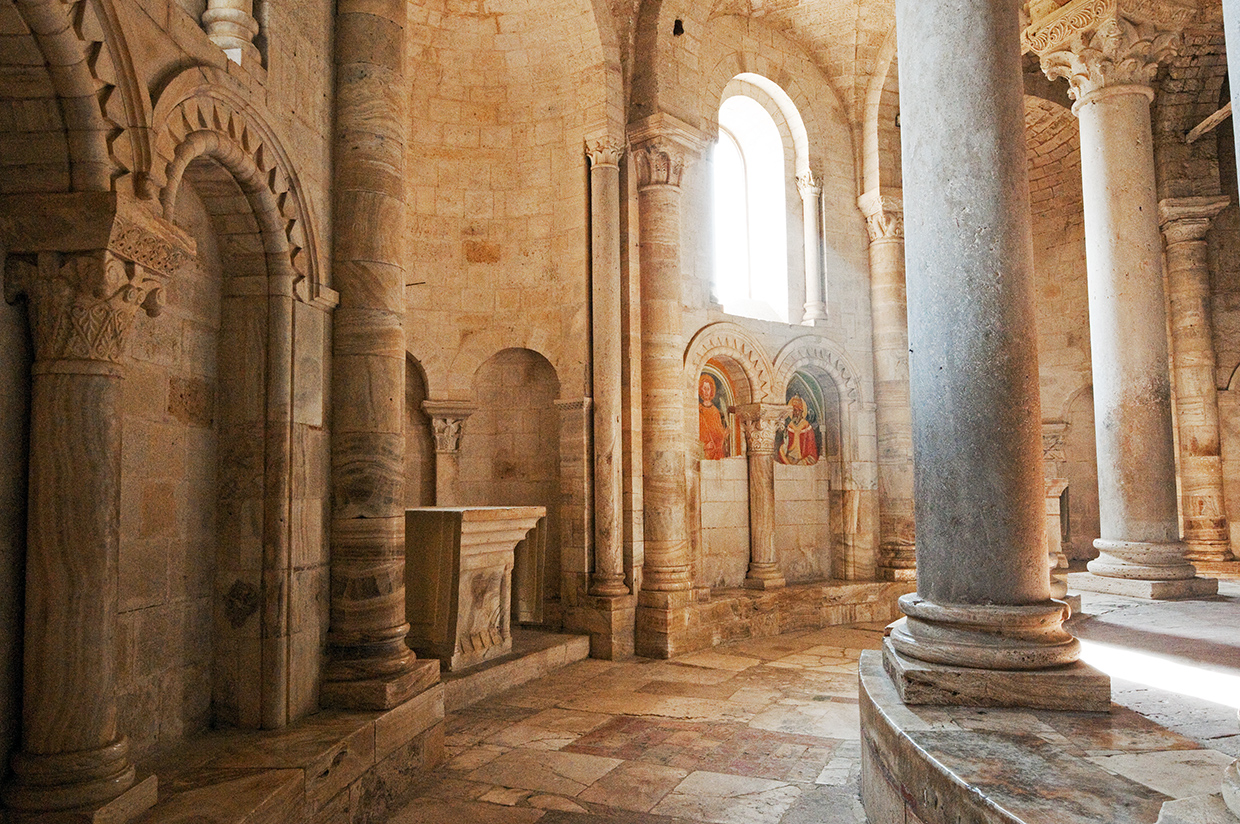
Widget not in any sidebars
Santa Ildegarda Garden
While I missed visiting this garden, I don’t want you to miss it.
Santa Ildegarda — Saint Hildegard of Bingen — was a Benedictine abbess who lived from 1098 and 1179.
She is one of the most important female figures of the Middle Ages.
Santa Ildegarda studied how to use nature in medicine and healing.
So in the garden named after her, you will find the healing herbs that she used.
Saint Hildegard was canonized by Pope Benedict XVI in 2012 and her feast day is celebrated on 17 September.
And the herbs that are grown here are made into all kinds of products you can buy in the Monastic pharmacy.
Found in the ancient treasure room, you can actually buy food products and body care products made from centuries-old recipes.
You can even buy beer — which is what I did.
I brought it back for my dad!
So don’t miss the garden and the pharmacy.
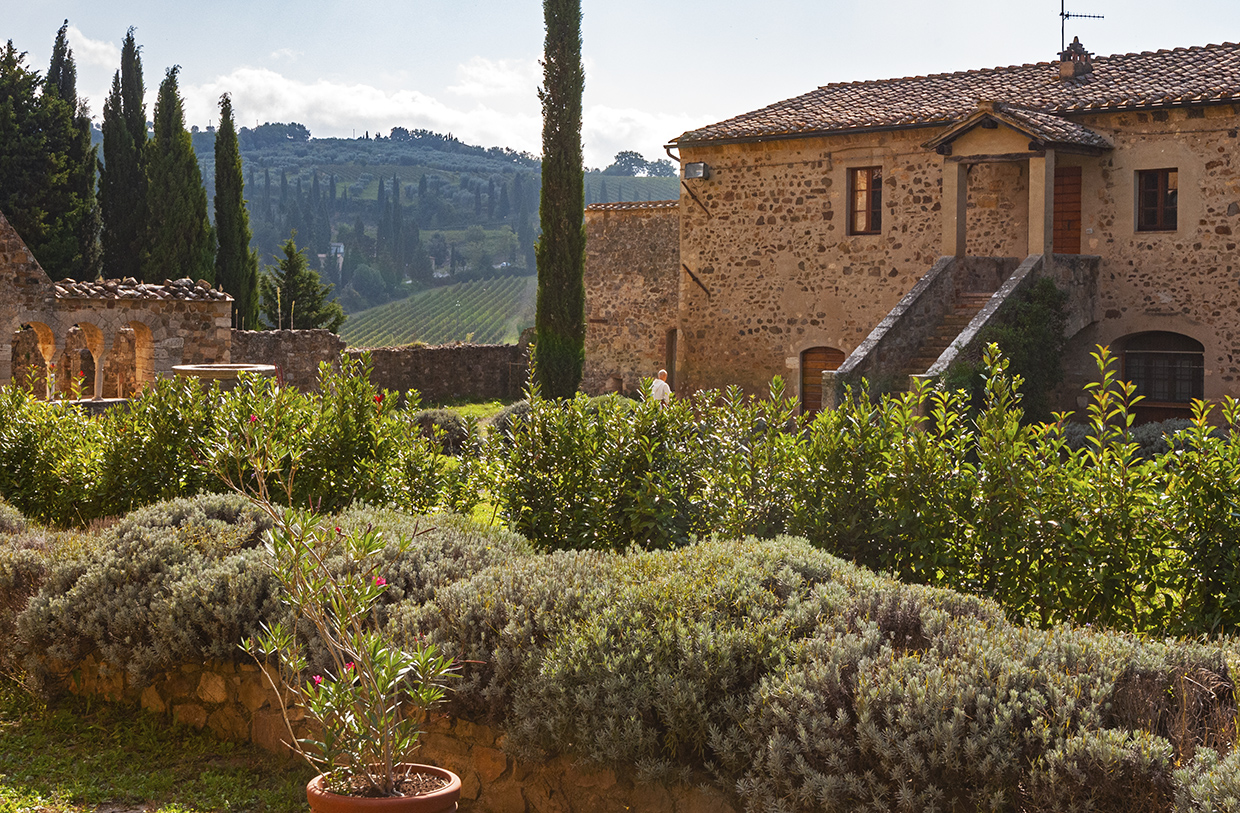
Tips for visiting Abbey of Sant’Antimo
As I mentioned earlier, Abbey of Sant’Antimo is open daily with some exceptions.
I recommend checking the website just in case it is closed for a special service or occasion.
Also do note that there are daily masses which you are welcome to attend.
But if you just want to visit and wander about, then you’ll want to avoid mass times.
While I took photos, I did realize later that there was a sign saying no photography.
Oops!
I tend to miss those because I’m gawking at everything.
But I don’t use a flash so that’s my excuse.
And no one called me out on it.
However, it is probably best to not take photos.
Sant’Antimo is free to visit.
The other thing I want to point out is that you can stay at the abbey guesthouse.
There are 10 simple, double rooms each with a sink.
Bathrooms are shared as is the communal kitchen.
So if you want a spiritual retreat — either on your own or with a small group — you can do so.
The final tip I have is this: don’t miss Abbey of Sant’Antimo!
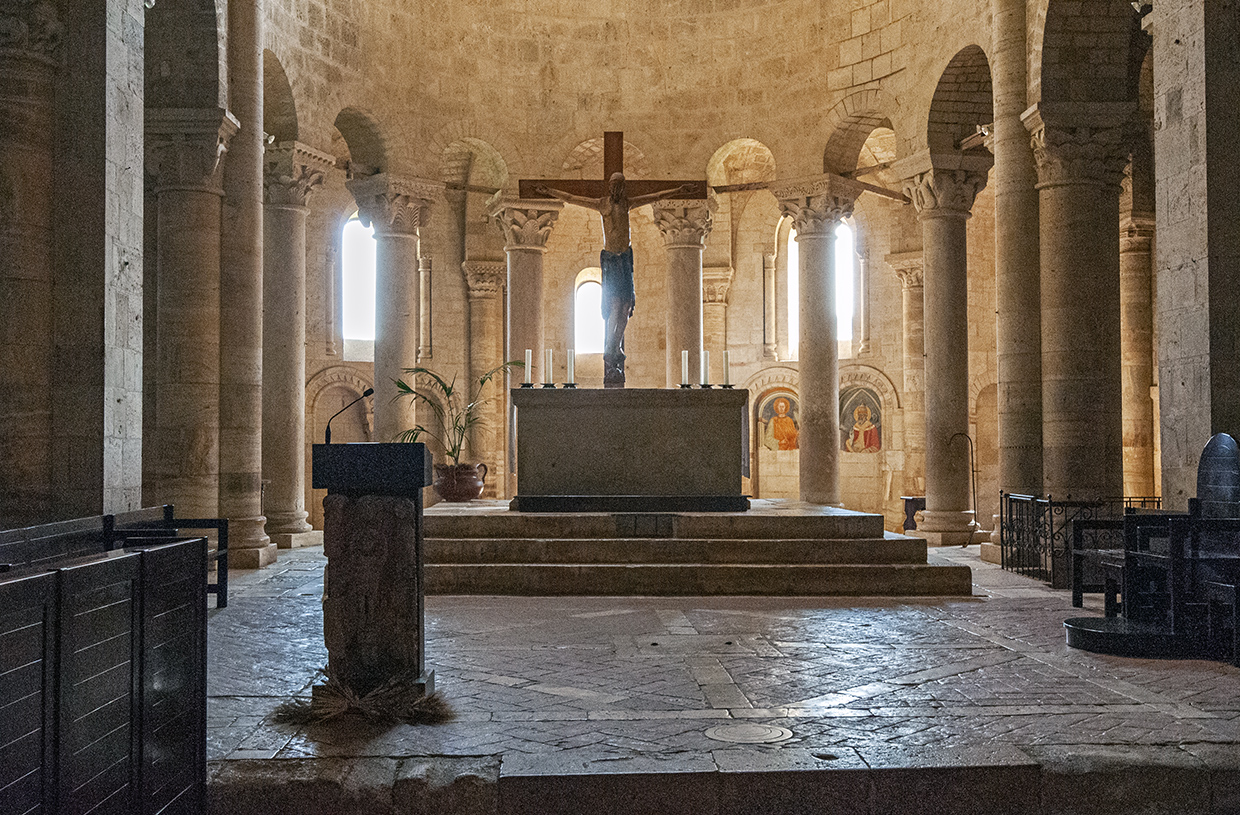
Please note that Wander Your Way is not fully recommending international travel at this time due to the current global health situation with the COVID-19 pandemic. Although some countries are beginning to open, it is complicated.
If you do decide to travel internationally, please do your research or use a travel planning service such as Wander Your Way. Please stay up to date using official sources like the WHO and CDC.
I am continuing to write about incredible destinations and to offer tips on travel to Europe, so that you will find some solace in these posts — so you dream about travel and learn about places. And hopefully make that bucket list! This way when we can all fully travel again, you’ll be ready to go. For now, stay close to home and stay safe!
Disclaimer: This post contains affiliate links. This means I will earn a commission – at no extra cost to you — if you click on the link and purchase anything from these trusted companies. It helps Wander Your Way, a small business, stay in business. Thanks for your support!
Like it? Pin it!
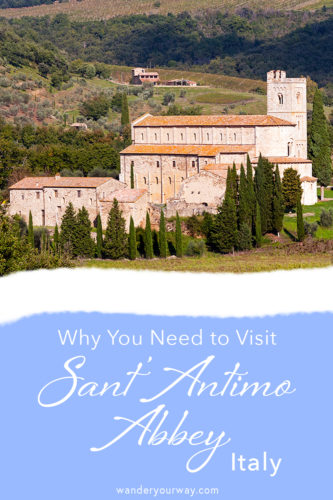
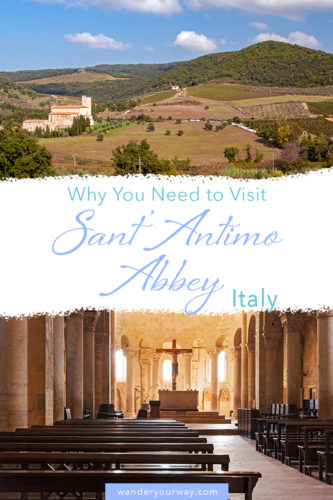
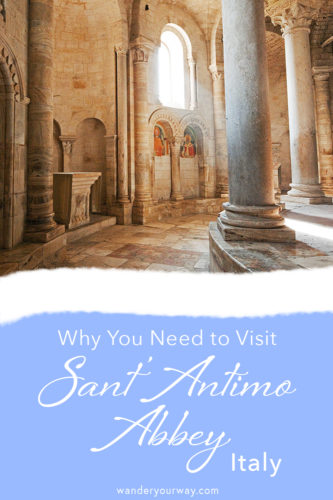

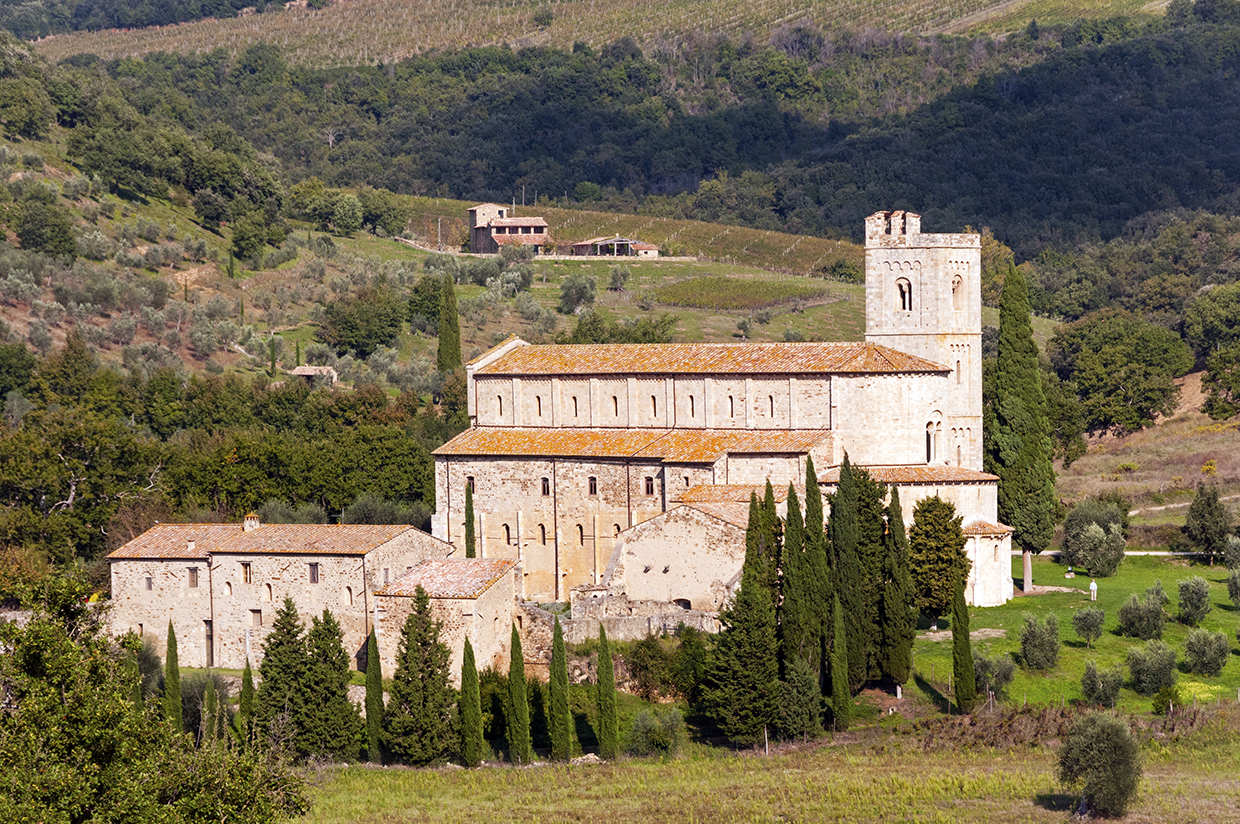







The Abbey of Sant’Antimo is gorgeously stunning! The architecture is breathtakingly beautiful and no doubt a masterpiece. With no glitz and glam, statues or painting, the wood and stone work takes you into a different era of the old and rich history! Lovely post. Thanks for sharing!
It is gorgeous! I agree that the beauty of Sant’Antimo is in its simplicity.